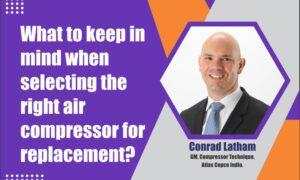We drink two liters of water, but breathe 11,000 liters of air every day, yet air pollution is a topic not often discussed until it becomes literally ‘visible’, and human health is at risk.
“Air pollution is visible here on most days… you can taste it in the air,” said one city inhabitant in Asia.
This year alone, in India, air pollution routinely exceeded dangerous levels, to the point where it busted the limits of their monitoring devices. In China, it is responsible for a million premature deaths annually, and the average concentration of PM2.5 in most cities double the world average. The situation in Southeast Asia isn’t any brighter, where traffic congestion and poorly planned housing often means people are living and working adjacent idling engines stuck in traffic. The World Health Organization (“WHO”) estimates that every year, 3.7 million deaths are attributed to outdoor air pollution and a whopping 4.3 million deaths from indoor air pollution.
The hidden problem: indoor air quality
You’d be mistaken in thinking that outside air does not enter your spanking new office. It does. And even worse, it gets added to with indoor pollutants. And since we spend more than 90 percent of our time indoors, we now have a cocktail of air that we can literally taste.
There are commonly three key metrics used to measure indoor air quality (“IAQ”). Firstly,PM2.5 which measures the presence of fine particles small enough to enter your bloodstream; secondly, carbon dioxide (“CO2”) and lastly, total volatile organic compounds (“TVOC”), from chemicals off-gassing from furniture and building materials.
In typical offices, air is often recirculated. This helps to limit the amount of PM2.5 from outside air if levels are less than ideal.
However, that means that CO2 levels are dangerously high in most buildings, which impacts health. Firstly, it reduces productivity, as there’s less oxygen going to the brain and cognitive function is significantly lowered. Secondly, increased levels of CO2 encourage mold and bacteria growth; and particularly in Southeast Asia where humidity levels are elevated, respiratory health suffers.
Better air is not just for basic health; it also improves productivity and cognitive ability. The “CogFX Study” by the Harvard School of Public Health shows that across information usage, crisis response and strategic thinking, higher levels of ventilation (which lowers CO2) increases cognitive ability by between 97 per cent – 288 per cent.
Enter the Smart City: Data for Healthy Air
At the heart of it all, what defines a smart city is, is being able to deploy “data for good”, as pithily summarised by Adam Beck at Smart Cities Council ANZ. Smart city outcomes must be aligned with sustainability, livability, and productivity goals, which means the community needs to evolve from being simply aware of the conditions, and in this case, air quality, but also be sophisticated enough to analyse and create actionable insights.
Today, environmental data at the city level is often already easily available. However, building-level air quality is often not measured, and even if it is, not disclosed nor acted upon. This is even more important when in many places, even in Singapore, they have applied an air quality code of practice which stipulates a level of PM2.5 that is in fact higher than WHO minimum standards.
Building, meet your air quality data
There are two actions that I’d like to propose here. Firstly, building owners could start measuring and disclosing the IAQ data, and have a conversation around how IAQ can be improved. It is both the responsibility of the building owner as well as the occupiers.
Secondly, experiment with new business models and services around air quality, beyond energy efficiency. While energy efficiency is important and buildings in fact contribute to 39 percent of energy-related carbon emissions, most occupiers spend only 1 percent of their cost on energy, but up to 90 percent on staff costs. Prioritizing air quality in fact has a direct impact on an organization’s top line.
One innovative way to lowers barriers and risks for building owners and facilities managers is tackling air quality is through the as-a-service model.
Healthy air, like clean water and personal safety, is a basic need, and encouraging servitisation would put the service in the hands of an expert, who can then deliver “healthy air.” Once people move to a pay-per-use model, perhaps they will feel the direct benefit and sometimes even cost-savings of better air. This is not a new concept – we have music-as-a-service, transportation-as-a-service and even workspace-as-a-service. The subscription-based model is prevalent in our daily lives, and if the building industry adopts some of these alternative business models, perhaps we can move towards healthy air-as-a-service and truly reach the sustainable development goal of Good Health and Wellbeing for all by 2030.
Air pollution is a topic not often discussed until it becomes literally ‘visible’, and human health is at risk
Authored article by:
Joelle Chen, Director, Global Partnerships & Marketing,
Intelligent Air Solutions,
Mann+Hummel
Cookie Consent
We use cookies to personalize your experience. By continuing to visit this website you agree to our Terms & Conditions, Privacy Policy and Cookie Policy.














